Message from the Chair

By Laurel Farrell, FSSB Chair
Spring often brings renewed enthusiasm and passion for activities you believe in. There is a renewed desire to accomplish items on your “to-do” list and take on new projects. The Organization of Scientific Area Committees (OSAC) for Forensic Science continues to thrive due to the passion of its members and affiliates for the mission and aims of the organization. A concerted effort continues to draft OSAC Proposed Standards that align with the main topics identified in OSAC’s Organizational Priorities document. These standards support the technical foundation for the forensic services provided daily in the United States. The OSAC Work Products Tracker is now also available to the public. This tracker provides current information on the significant number of standards currently in development and moving through the Registry approval process. The OSAC is mature enough now that standards are also coming up for renewal in the respective standards developing organizations (SDOs). The standards development process is designed to allow for continual improvement in wording based on use of the standard and the continued evolution in preferred terminology. Please take time to review the articles in this newsletter on the history of the OSAC Registry of Standards and growing list of standards that it now contains!
This newsletter also showcases efforts that have been made by OSAC subcommittees and the professional forensic science organizations represented on the Forensic Science Standards Board (FSSB) to educate the forensic science community on the intent of standard requirements and on implementation tips and techniques. The lessons learned by these early adopters save everyone else in the community time and effort and provide input on the tools that may be necessary for wider implementation.
The FSSB and the OSAC Program Office are hosting a series of outreach meetings with stakeholders to identify challenges to implementation and to brainstorm on ideas to reduce or remove hurdles. The first stakeholder meeting was held with representatives from standards developing organizations, proficiency test providers, certification bodies and accreditation bodies in January 2021. The FSSB and OSAC Program Office came away with several action items after this meeting. The FSSB is looking forward to the second meeting in this series that is scheduled to be held on May 27 with leaders of crime laboratories and other forensic science service providers. The continued feedback received will be used to revise and refine the OSAC Registry Implementation Plan and as input into the long-term strategic plan that is being developed.
Use, or implementation, of the standards is growing. Just as with standards development, this too will begin to grow at an exponential rate in the near future. If your organization has not yet taken its first step to implementation, the articles in this newsletter may give you an idea of how to take that first step. If you need assistance, please contact the OSAC Program Office.
Implementation is the ultimate compliment to those that have put in the years of hard work to get a standard published.
Respectfully,
Laurel Farrell, FSSB Chair
OSAC News
Life of Standards Implementation from Infancy to Maturity
By Mark Stolorow*
OSAC was born as Forensic Science Guidance Groups in the NIST/USDOJ Memorandum of Understanding signed in March 2013. OSAC drew its first breath when the proposed organization chart was presented at the inaugural meeting of the National Commission on Forensic Science on February 4, 2014. By October 2014, the Forensic Science Standards Board (FSSB), resource committees, scientific area committees (SACs) and subcommittees were in place and taking their first baby steps. OSAC said its first words on January 27, 2016 at the All-Hands Meeting at the National Conference Center in Leesburg, Virginia. There, then NIST Director, Willie May, announced the listing of the first standard on the OSAC Registry.
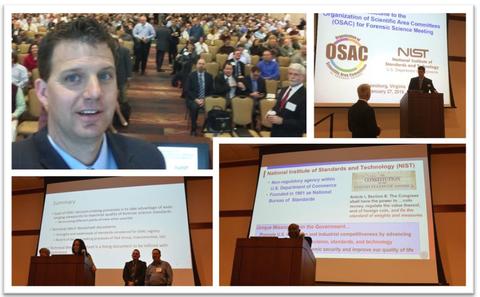
The infant was walking and talking and has never looked back! In April 2021 OSAC added the 50th standard to the Registry. Reflecting on where OSAC started and where we have come today gives us an opportunity to celebrate the wonderful collaboration and cooperation of more than a thousand members and affiliates who have contributed so much time and energy to these achievements. While OSAC has undergone continuous improvement in its metamorphosis over time, we still have far to go in standards development and in helping the forensic science community to embrace the implementation of standards.
Recognizing the value of high-quality forensic science standards and instituting them in the criminal justice system is foremost among the purposes of the 2018 OSAC Registry Implementation Plan. This plan outlines various pathways for implementation, some of which include:
- Implementing standards broadly across the nation’s forensic science laboratories.
- Championing standards implementation by innovative leaders in all our criminal justice stakeholder communities.
- Advocating for standards development and implementation in policy position statements by the boards of directors of all the major professional forensic science organizations.
- Educating judges, prosecutors, defense attorneys and innocence project attorneys on the virtues of expert testimony describing the value of applying standards to the analysis of forensic science evidence.
- Incorporating incentives into forensic science research funding decisions that recognize and encourage agencies to implement standards.
- Incorporating education about the use and value of standards into the forensic science curricula of colleges and universities.
The implementation of standards has begun to come full circle. We have now witnessed court rulings citing standards on the OSAC Registry. Among the earliest of those rulings is the memorandum issued by the judge in a seized drugs case in Imperial County, California, barring the admission of drug evidence for failure to conduct sufficient confirmatory chemical analysis, contrary to standards on the OSAC Registry (see People of the State of California v Randy Chacon, et al, Case No. JCF36904, Imperial Co. Cal. Superior Court, Statement and Decision of Order RE: Motion to Set Aside, Dismiss, Grand Jury Indictment [Pen. Code §995]).
As the criminal justice system recognition of standards on the OSAC Registry broadens, forensic science experts will increasingly encounter examination and cross-examination directed specifically at the application of standards to the analysis of evidence introduced into criminal courts. The value of introducing nationally recognized high-quality forensic science standards to assist the trier of fact in adjudicating criminal cases is also likely to increase as stakeholders become educated about the growing OSAC Registry of Standards.
*Mark Stolorow was the NIST Special Programs Office Director for OSAC Affairs, 2014-2019. Following his retirement in 2019, he has served the OSAC Program Office as a consulting contractor facilitating implementation of standards on the OSAC Registry.
OSAC Stakeholder Outreach Meetings
To further broaden collaboration opportunities, OSAC is establishing a series of virtual meetings with key stakeholder groups in the forensic science community to share ideas and find common goals to work towards.
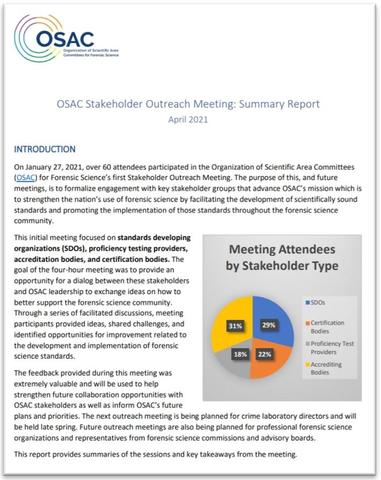
OSAC held its first Stakeholder Outreach Meeting on January 27, 2021 with standards developing organizations (SDOs), certification bodies, proficiency testing providers, and accreditation bodies. Read the Summary Report on the OSAC Events webpage for a review of the sessions and the key takeaways from this meeting.
OSAC’s next Stakeholder Outreach Meeting will be held May 27, 2021 with crime laboratory directors and other key decision-makers from local, state, and federal crime laboratories. We’re looking forward to engaging in a conversation with these stakeholders to hear their thoughts and the current challenges they see related to forensic testing, standardization, and quality management.
OSAC Registry Updates
Registry Additions: Q2 FY2021
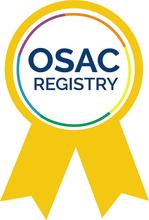
The Forensic Science Standards Board (FSSB) approved three standards for the OSAC Registry in Q2 FY 2021. Initially drafted by OSAC’s Wildlife Forensic Biology and Forensic Toxicology Subcommittees, these standards were added to the OSAC Registry on March 2, 2021.
- ANSI/ASB Standard 019, Wildlife Forensics General Standards, First Edition, 2019. This standard covers good laboratory practices, evidence handling, and training as well as considerations of taxonomy and reference collections that are specific to wildlife forensic science.
- ANSI/ASB Standard 029, Report Writing in Wildlife Forensics: Morphology and Genetics, First Edition, 2019. This standard describes the information to be provided in formal written reports of wildlife forensic examinations for use in legal proceedings. Requirements for both genetic and morphological examination reports are covered.
- ANSI/ASB Standard 053, Standard for Report Content in Forensic Toxicology, First Edition, 2020. This standard delineates the requirements for reporting results from forensic toxicology analyses. Specifically, it is intended for the subdisciplines of human performance toxicology (e.g., driving- under-the-influence of alcohol or drugs and drug-facilitated crimes), postmortem forensic toxicology, non-regulated employment drug testing, court-ordered toxicology (e.g., probation and parole, drug courts, child services), and general forensic toxicology (e.g., non-lethal poisonings or intoxications).
Visit the OSAC Registry webpage to access these standards and see the other published and OSAC Proposed Standards available to the forensic science community.
Registry Implementation Corner
Wisconsin State Crime Laboratories Move "Forward" with Implemented OSAC Standards
Courtesy of Eva M.L. King, Division of Forensic Sciences, Wisconsin State Crime Laboratories
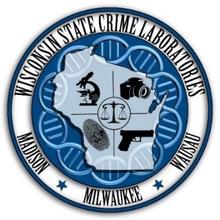
The Path
Wisconsin State Crime Laboratories (WSCL) Volume 1, Issue 4, January 29, 2015 internal communication to all WSCL Staff provided the Quality Assurance update on the Fall 2014 Association of Forensic Quality Assurance Managers (AFQAM) 13th Annual Training Conference held at Vancouver, British Columbia. There, then Director of OSAC Affairs Mark D. Stolorow, presented on the federal level’s Forensic Science Realignment to strengthen the nation’s use of forensic science. He spoke of pending legislation at that time and the new NIST role of administering the OSAC. Director Stolorow also informed of the OSAC structure and respective OSAC roles that included the Forensic Science Standards Board’s role in managing the OSAC Registry of Approved Standards and Guidelines, approving standards, setting rules, and establishing priorities for the OSAC.
The Journey
Looking back on the almost seven years since that WSCL internal communication, the WSCL moved from OSAC introduction to encouraging staff to participate in OSAC activities, all the while continually receiving updates through OSAC publications, OSAC presentations at professional organizational meetings, and meetings between OSAC and WSCL. During this period with clear mission, vision and a keen focus on the 2009 National Research Council’s paper, Strengthening Forensic Science in the United States: A Path Forward, a reorganization of the WSCL occurred allowing scientific independence from law enforcement leadership transforming the WSCL into a single Division of Forensic Sciences (DFS) under the direct Leadership of Division Administrator (Labs Director) Nicole L. Roehm. Division Administrator Roehm encouraged participation in national forensic science standards development and working groups. Under Director Roehm’s leadership Deputy Division Administrator Jennifer D. Naugle became a member of national committees for forensic science policy and national advocacy. Director Roehm instituted the WSCL’s Quality Assurance Bureau (QAB) that resulted in a Quality Statement that is very intentional about the commitment to OSAC Standards.
WSCL Quality Statement
To achieve and maintain accreditation under the international standard “General Requirements for the Competence of Testing and Calibration Laboratories” (ISO/IEC 17025), a forensic science accrediting body's supplemental requirements, and all other statutory, regulatory standards required to provide forensic services, and to use and support technically sound standards and guidelines of the Organization of Scientific Area Committees (OSAC) for Forensic Science Registry as applicable.
Wisconsin Moves "Forward"
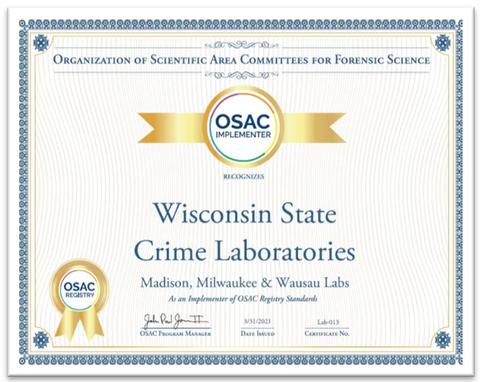
Communications continue at the WSCL with a wider network by continually incorporating the scientifically based standards of the ISO/IEC 17025:2017, the WSCL’s accrediting body’s Accreditation Requirements, and the FBI Quality Assurance Standards and now also by becoming an implementer of OSAC standards. With credit to DFS Leadership and all WSCL Staff, the WSCL has declared their implementation of the following standards on the OSAC Registry and has been awarded an OSAC Implementer Certificate:
- ANSI/ASB Standard 022, Standard for Forensic DNA Analysis Training Programs, First Edition, 2019 (added to OSAC Registry on September 1, 2020).
- ANSI/ASB Standard 020, Standard for Validation Studies of DNA Mixtures, and Development and Verification of a Laboratory’s Mixture Interpretation Protocol, First Edition, 2018 (added to OSAC Registry on May 12, 2020).
- ANSI/ASB Standard 040, Standard for Forensic DNA Interpretation and Comparison Protocols, First Edition, 2019 (added to OSAC Registry on May 12, 2020).
- ASTM E2916-19e1 Standard Terminology for Digital and Multimedia Evidence Examination (added to OSAC Registry on July 7, 2020).
The WSCL continues “forward” with an eye and contribution to the OSAC Registry of high-quality, technically sound proposed and published standards for forensic science and commitment to declaring implementation of OSAC Standards as applicable.
Texas Forensic Science Commission's Continued Commitment to OSAC and Registry Implementation
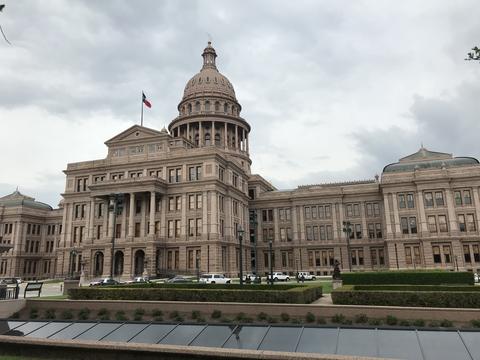
In March, the Texas Forensic Science Commission (TXFSC) contacted members from the Texas Association of Crime Laboratory Directors (TACLD) to inform and hear their feedback on a new initiative related to the implementation of standards on the OSAC Registry.
As part of this initiative, first, the TXFSC plans to develop a section of their website dedicated to OSAC implementation. Each laboratory will have the ability to indicate which OSAC Registry standard(s) they have implemented (in whole or part). Laboratories will also be able to post their OSAC Registry Standards Implementer Certificates on their OSAC profile pages.
The first group of standards this initiative will focus on include the disciplines covered by the following OSAC subcommittees:
- Human Forensic Biology
- Seized Drugs
- Forensic Toxicology
- Trace Materials
- Ignitable Liquids, Explosives, & Gunshot Residue
- Footwear & Tire
- Firearms & Toolmarks
- Interdisciplinary
Second, the TXFSC is also developing resources to:
- Provide supplemental information/guidance regarding the standards to the extent the Commission believes such guidance would be helpful to ensure a full understanding and appreciation of the concepts expressed in the standard.
- Provide laboratories assistance with performing gap analysis for standards that may currently feel out of reach in a given discipline, or for certain sections of standards that post particular barrier to implementation. This material will include checklists and other tools to help practitioners implement standards efficiently and effectively.
- Provide opportunities or interaction/training with the individuals involved in drafting the standards and other subject matter experts.
Professional Forensic Science Organizations Support of OSAC and Implementation

Seven professional forensic science organizations, all represented on OSAC’s FSSB, have formally declared their support of OSAC and the development and implementation of forensic science standards. Read the policy and positions statements from the American Academy of Forensic Sciences (AAFS), Association of Firearm and Tool Mark Examiners (AFTE), Association of Forensic Quality Assurance Managers (AFQAM), American Society of Crime Laboratory Directors (ASCLD), International Association for Identification (IAI), National Association of Medical Examiners (NAME), and Society of Forensic Toxicologists (SOFT) on OSAC’s Registry Implementation webpage.
OSAC appreciates the continued support from these seven organizations and looks forward to working with them to advance forensic science through standards development and implementation.
Coming Soon: Implementation Survey

In mid-June 2021 OSAC will be releasing the first annual survey to laboratory directors and quality assurance managers across the country to assess the state of OSAC Registry standards implementation. OSAC is seeking to understand how laboratories are implementing standards and what support they need to improve standards implementation. The survey is intended to be a yearly snapshot and assessment, and this first one will cover Registry standards (those posted through March 2021). Participants will be encouraged to reach out to the OSAC Program Office for any assistance they need with current and future standards implementation.
After the successful completion of this first survey we hope to expand it to forensic entities in addition to crime laboratories, including digital forensics, crime scene investigation and forensic pathology. If you have any questions, please email the OSAC Program Office (forensics [at] nist.gov).
OSAC in Action
Participate in OSAC's Forensic Toxicology Subcommittee Questionnaire on Blood Alcohol Analysis
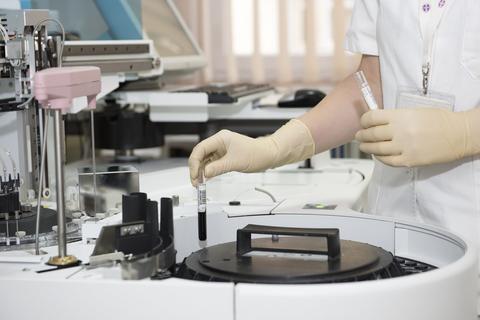
OSAC’s Forensic Toxicology Subcommittee is seeking information regarding methodology(ies) and current practices used by forensic laboratories for the quantitative analysis of blood alcohol (ethanol).
If your laboratory performs this analysis, the subcommittee invites you to participate in this questionnaire (only one entry per laboratory, please). The aggregated summary data obtained may be published/presented for the benefit of the community, but individual laboratory data will remain confidential.
Please contact Becky Wagner at becky.wagner [at] dfs.virginia.gov (becky[dot]wagner[at]dfs[dot]virginia[dot]gov) if you have any questions.
Now Available: OSAC Work Products Tracker
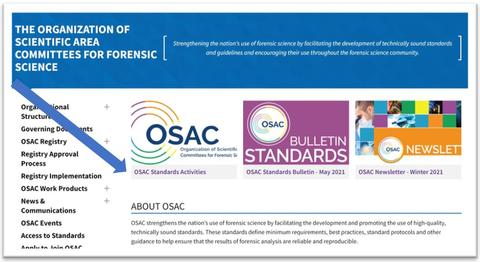
To better inform the forensic science community of OSAC’s latest standards and Registry activities, we have made available a list of standards, organized by each OSAC subcommittee, that are moving through the development and Registry processes. This list will be updated each month with the release of the OSAC Standards Bulletin. Visit the OSAC website to see more than 100 forensic science standards that are in the pipeline!
OSAC at AAFS
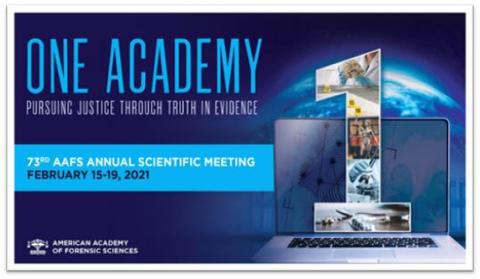
Almost 4,000 registrants from all over the world joined in for the 2021 AAFS Scientific Meeting held February 15-19. There were plenty of standards-related presentations and OSAC participation at the first AAFS virtual event. Read more about the standards workshops, case break session, standards consortium session, and other presentations here.
Webinar Series on New Standards and Best Practices for DNA
On January 20, 2021, OSAC, the AAFS Academy Standards Board (ASB) and Promega held the fourth webinar in a series aimed at providing information on new standards and best practice recommendations for forensic biology and DNA testing laboratories. Part four of this series highlighted ANSI/ASB Standard 018, Standard for Validation of Probabilistic Genotyping Systems, First Edition, 2020 and described how this document was developed, it’s key requirements, and implementation strategies. This standard, initially drafted by OSAC’s Human Forensic Biology Subcommittee (formerly the Biological Data Interpretation & Reporting Subcommittee), was published by ASB in July 2020 and added to the OSAC Registry on May 4, 2021.

If you missed any of the webinars in this series, or would like to watch them again, you can view them on-demand on the Promega website.
- Part 1: Development and Publication of New Standards and Best Practices – The Process.
- Part 2: Mixture Interpretation Validation, and Protocol Development and Verification.
- Part 3: Training Standards Overview.
- Part 4: ANSI/ASB Standard 018, Standard for Validation of Probabilistic Genotyping Systems, First Edition, 2020.
OSAC in the News
March/April ASTM Standardization News
OSAC’s Ignitable Liquids, Explosives, & Gunshot Residue Subcommittee is mentioned on page 12 for its work in support of the E30 standard that will compile terms and definitions related to the analysis of explosives.
An interlaboratory study evaluating the interpretation of forensic glass evidence using refractive index measurements and elemental composition
This journal article in Forensic Chemistry mentions OSAC’s efforts in developing a standardized verbal scale for trace evidence interpretation.
Mt. Everest—we are going to lose many: a survey of fingerprint examiners’ attitudes towards probabilistic reporting
The draft OSAC Proposed Standard for Friction Ridge Examination Conclusions, developed by OSAC’s Friction Ridge Subcommittee, is mentioned in this Law, Probability and Risk journal article.
Houston Forensic Science Center April 2021 Newsletter
On page two, HFSC noted how they are exceeding accreditation requirements through several mechanisms including adopting all applicable standards on the OSAC Registry.
OSAC & Other Forensic Science Events

May 2021
17-20: OSAC Dogs & Sensors Subcommittee Virtual Meeting
25: CSAFE webinar – Algorithms in Forensic Science: Challenges, Considerations, and a Path Forward
27: OSAC Stakeholder Outreach Meeting with Crime Laboratory Directors
June 2021
1-3: OSAC Trace Materials Subcommittee Virtual Meeting
2-3: OSAC FSSB Quarterly Meeting (virtual)
22-24: OSAC Speaker Recognition Subcommittee Virtual Meeting
24: OSAC Crime Scene Investigation & Reconstruction Subcommittee Virtual Meeting
27-7/1: OSAC Seized Drugs Subcommittee Virtual Meeting
August 2021
1-7: Annual IAI Forensic Educational Conference
22-26: ASCLD Annual Symposium
26: OSAC Crime Scene Investigation & Reconstruction Subcommittee Virtual Meeting
30-9/2: OSAC Ignitable Liquids, Explosives, & Gunshot Residue Subcommittee Virtual Meeting
Professional Organization Spotlight
The American Society of Crime Laboratory Directors

By Ray Wickenheiser, FSSB ASCLD Representative
The American Society of Crime Laboratory Directors (ASCLD) is a nonprofit professional society of forensic science managers and directors dedicated to providing excellence in forensic science through leadership and innovation. A component of the ASCLD mission is a commitment to promoting, encouraging, and maintaining the highest standards of practice in forensic science. ASCLD fully supports the efforts of OSAC to develop standards and best practices and encourages their adoption. ASCLD member laboratories further support this initiative by providing staff with extensive forensic expertise to assist in all aspects of OSAC. As OSAC has reached a landmark 50 standards now placed on the Registry, focus on implementation of standards will continue to increase.
The ASCLD Standards and Accreditation Initiatives Committee promotes accreditation, standards development, and standards implementation. ASCLD is the administrator of TC-272, working on developing a new overarching ISO standard specific to forensic science. ASCLD maintains weekly contact with membership via the weekly Crime Lab Minute newsletter, notifying members of opportunities to review standards as they are published by an SDO and requests input on proposed standards and best practices. The committee continues to make recommendations on standards implementation to the ASCLD Board of Directors and is developing an implementation resource document.
From February through June of 2020, ASCLD and the IAI distributed a survey on OSAC standards implementation. A total of 287 responses (110 from ASCLD members) from a variety of disciplines and jurisdictions provided data. ASCLD member laboratories are aware of OSAC standards, and many are evaluating standards and considering best avenues for implementation. Multiple barriers to implementation were identified, including limited resources. Sixty-eight percent of ASCLD respondents felt that a centralized repository that allowed the opportunity to connect with other organizations that have already implemented or intend to implement policies, procedures, and practices based on OSAC developed or approved documents, this would increase the likelihood their organization would implement similar policies, procedures, and practices. A summary of the survey findings has been provided to ASCLD and the FSSB for consideration into implementation plans.
The ASCLD Annual Meeting is proceeding in Boston August 22-26, 2021. I will shamelessly plug the workshop on Collaborative Validation Workshop on August 23 in which both FSSB Chair Laurel Farrell and I will be presenting. In this workshop, we will provide a mechanism to streamline validation and adoption of OSAC standards in the process. As one of the first in person meetings to take place in the COVID-19 pandemic era, this will be a wonderful opportunity for leaders in forensic science to reengage in person in a safe and responsible atmosphere.
The COVID-19 pandemic has made this a very challenging year for crime labs. Despite these challenges, ASCLD remains focused on member awareness, support and engagement in OSAC standards and best practices development and implementation.
NIST Research Activities
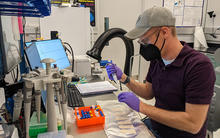
Q&A with Ed Sisco, Samuel J. Heyman Service to America Medal Finalist
Ed Sisco, a research chemist at NIST, is interested in helping forensic chemists do their jobs more safely and effectively. He is a finalist in the emerging leaders category for a Samuel J. Heyman Service to America Medal, which is awarded to federal employees under the age of 35 who have made important contributions early in their professional careers. Read more about Ed and his work in forensic science in this Q&A.
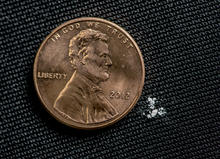
Safe, Efficient, Reliable: New Science in the Fight Against Killer Drugs
Read about the new tools NIST researchers are giving law enforcement and public health experts to combat fentanyl and other synthetic drugs.
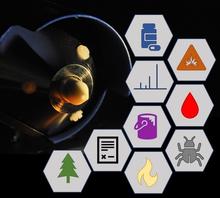
Methods, Software Tools, and Resources for Forensic Laboratories with DART-MS or other AI-MS Techniques
NIST has updated its NIST DART-MS Forensics Database 2020, an evaluated collection of mass spectra of seized drugs, cutting agents, and related compounds. This project is part of NIST’s ongoing effort to help labs detect and identify synthetic opioids and other drugs efficiently, realiably, and safely.

